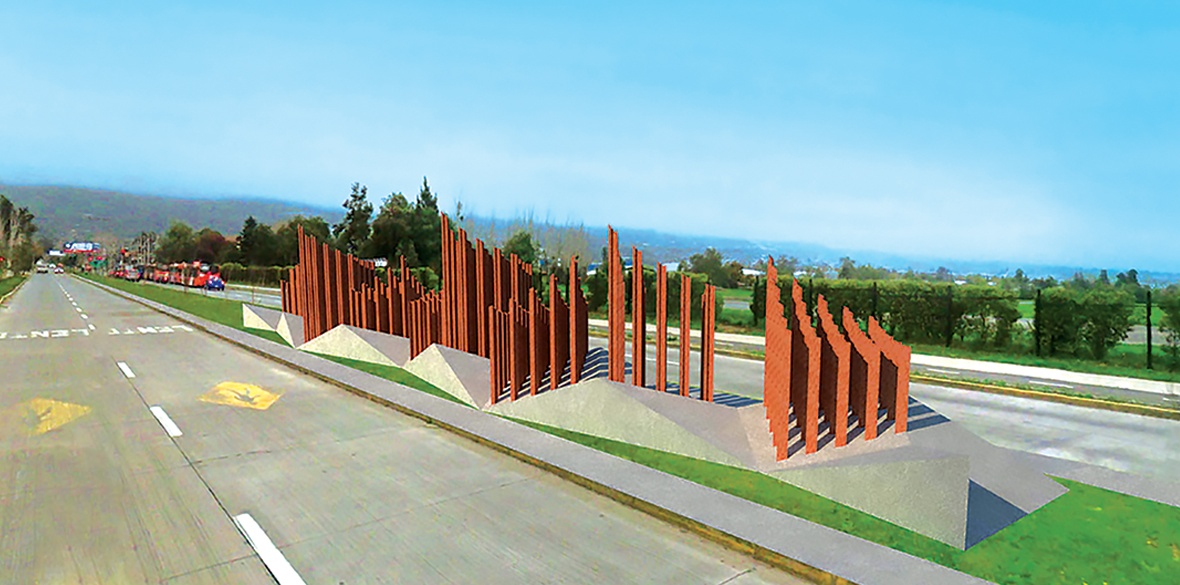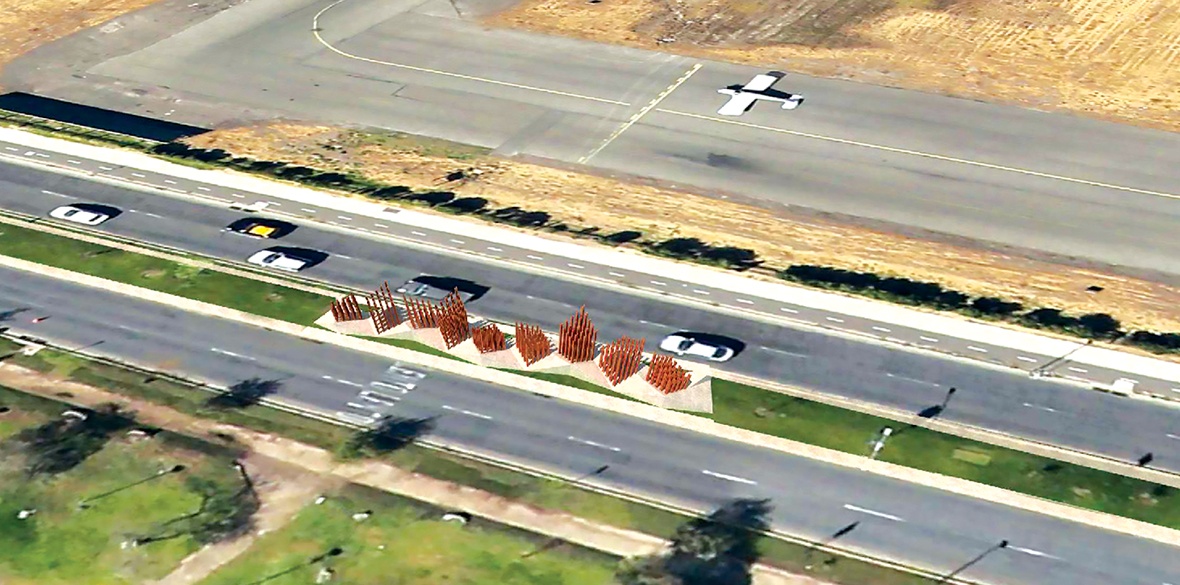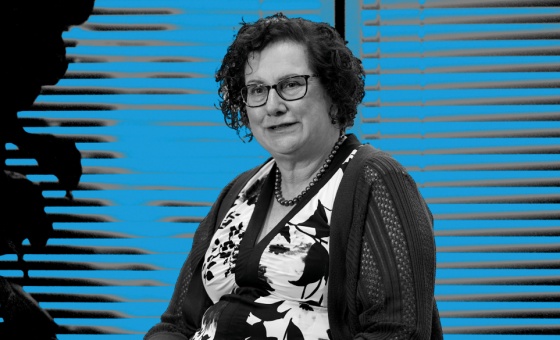This is the last article you can read this month
You can read more article this month
You can read more articles this month
Sorry your limit is up for this month
Reset on:
Please help support the Morning Star by subscribing here
CAN you tell us what inspired you to create this unusual sculpture?
The project is the result of those of us who participate in the activities of the Tobalaba Aerodrome Memorial Group.
To relate in a sculptural work to such despicable events as throwing bodies into the sea from an army aircraft implies pain and re-victimisation, but to think that the comrades who suffered this tragic fate are reclaiming their presence among us is more a symbol of hope than of pain.
The concept behind this memorial is that of bodies that, represented by the train tracks, retake their space among us. What we know is that the bodies were tied with wires to the rails. Marta Ugarte, [a teacher] was the only body that returned to the shore, and a mother-of-pearl button was discovered attached to a train rail at the bottom of the sea.
The train rails are arranged in such a way as to evoke the shape of the waves of the sea, with each of the victims identified on a piece of rusty metal that has kept its memory unscathed.
Why place it in a central reservation?
A memorial must be built in the place where the events took place, but at the same time the chosen location must be a place of high public visibility, since the objective is to recount what happened to ensure there will be no repetition.
![La Voz de La Reina]](https://morningstaronline.co.uk/sites/default/files/styles/inline/public/Cristian%20del%20Canto.jpg?itok=Y0OW1qrd)
The central alleyway of Fernando Castillo Velasco Avenue, located in front of the airfield runway, meets these requirements as that is where the take-off and landing of aircraft took place.
It is a connecting route to, among others, Villa Grimaldi, a detention and torture centre from which the bodies of comrades were taken to be thrown into the sea.
The elongated shape of the monument is related to Chile’s geography of more than 5,000km of coastline. The central reservation allows us to simulate that long coastline.
How will people experience the work?
Those who come to mind are mainly the users of public buses since most of them transport the inhabitants of Villa La Reina as well as the workers of the Industrial Park of La Reina.
Salvador Allende’s government was a government of residents and workers, and the victims of the repression following the 1973 coup d'état, many of whom left from this airfield, gave their lives and struggles for the causes of the working class.
The memorial includes pedestrian walkways at both ends, which can be used to walk around the site from close up. Although it is designed more to be observed than to be walked around, we understand that there should always be the possibility for those who want to come and leave candles, flowers or other things, to do so.
What is the symbolism of the tacks on the rails, and is the number of “rails” specific and therefore allegorical?
The National Truth and Reconciliation Commission put the number of disappeared detainees at approximately 1,200, and it is presumed that approximately 900 of them may have been thrown into the sea.
This figure is reflected in the project with the presence of nine islands or rock formations in which the emerging rails are grouped, each one of them symbolising a hundred comrades.
Our monument also has a key: “With Their Lives They Built Our History, To The Disappeared and Executed Detainees Who Passed Through This Precinct.”
How do monuments like yours help to overcome such a tragic past?
Let's start by agreeing that human rights are universal, with no room for interpretation and even less room for denialism. Our country has ratified international treaties in which the state must guarantee the right to memory, justice, reparation and guarantees of non-repetition.
The heirs of “Pinochetism,” however numerous and strong they may be, cannot disregard this mandate.
A monument such as this one tells the new generations about events of the past and seeks to overcome tragic moments in our history, to repair the memory of the victims and to lay the foundations for a future society in which there is no place for violations of the dignity, integrity and lives of people.
We understand that the Senate education and culture committee has given its approval and all that is missing is ratification by the plenary of the upper house. Are you hopeful that this will be the case?
The result of the vote in the Chamber of Deputies was very favourable for the Bill, with 88 votes in favour, 34 against and 15 abstentions, so it passed with an absolute majority to the Senate. It is very interesting to listen to the arguments of the deputies who voted in favour of the Bill, even the arguments of right-wing deputies, in many of them one can hear a respect for the universality of human rights and the importance of guaranteeing the non-repetition of these events.
The mayor of La Reina, Jose Manuel Palacios, is vehemently opposed to the memorial, why is this and can he effectively block the project?
We presented the Tobalaba Aerodrome Memorial project to the mayor and the local council for the first time in November 2017, and he always expressed his openness to the project.
However, when he was re-elected, things began to change. Today, pushed by negationist sectors, he has done everything possible to obstruct the progress of the project by echoing arguments that the sector could become a place for demonstrations similar to those that occurred after the so-called “social explosion” of October 18 2019.
What I can say in this regard is that those events triggered human rights violations by state bodies that had not been seen since the time of the military dictatorship.
Phrases such as “We are at war against a powerful and implacable enemy” were spoken by the president of the republic at the time [Pinochet]. The high number of deaths, torture, detentions and violations of various kinds that took place, showed us that nearly 50 years after the coup d'état, non-repetition is not guaranteed, which is why monuments such as these are more necessary than ever.
Are you hopeful that your project will go ahead?
Absolutely, it is a duty of the state and the commitment of all of us who believe in a free society.
Cristian del Canto Quiroga, an architect by profession, is a La Reina councillor for the Socialist Party (the party of Salvador Allende).










